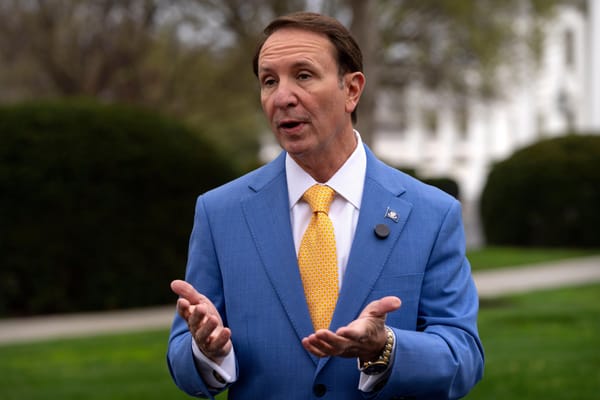AT&T Open to Tenants in its Fiber Footprint, Fixed Wireless Adds Level Off
CEO John Stankey said taking the company's own infrastructure open access in the future was 'entirely possible.'
Jake Neenan

WASHINGTON, Oct. 23, 2024 – AT&T’s fixed wireless product continued to add subscribers in the third quarter, but not quite as quickly as analysts had expected.

The company saw 135,000 new consumer customers on its Internet Air service, a bit lower than the expected 146,000. It brings the total to 477,000 subscribers since AT&T launched the product in August of last year.
While the service is still ramping up, John Stankey, the company’s CEO, reiterated that AT&T isn’t aiming for a fixed wireless customer base on par with the other two major wireless carriers. T-mobile and Verizon count 5.5 million and 4.2 million such subscribers respectively.
“Relative to our internal projections of the product, we’re very much aligned with what our expectations would have been,” Stankey said. “I don’t think you’re going to see what I would call a demonstrative shift in the quarters moving forward.”
He said AT&T is still mainly using the service as a holdover to keep DSL subscribers from ditching the company while they wait for fiber or after the company rips up its old copper networks. The company is only “occasionally” looking to market fixed wireless broadband in markets with surplus spectrum, he said.
New Street Research analyst Jonathan Chaplin wrote in an investor note after the call that the slower fixed wireless growth reported by AT&T and Verizon, was good news for cable companies, who have been shedding customers to the cheaper service on excess 5G capacity.
“This is a big deal for Cable. We have been expecting slower growth from T-Mobile and Verizon, but we didn’t know what AT&T could ramp to. With better insight into AT&T, we now know that we are past the peak,” he wrote.
On the fiber front, the company reported 226,000 new subscribers for a total of more than 9 million. Stankey said that number, also lower than analysts had expected, took a substantial hit from the month-long strike in nine states across the Southeast. He said the company might have added 50,000 more fiber subscribers otherwise.
In general, “broadband adds have fallen a little short of expectations so far, between FWA and fixed broadband. We don’t think that will change with T-Mobile’s results this afternoon,” Chaplin wrote. “It is unclear whether the industry has slowed further, or Cable has done a little better competitively.”
AT&T now boasts 28.3 million fiber passings and says it’s still on track to meet its goal of 30 million by the end of the year. Stankey said the company could expand its “opportunities” beyond that by 10 million to 15 million passings, adding he would give more detail on that at the company’s investor day in December.
Open to open access?
The company is involved in multiple open access projects, both the Gigapower build its pursuing with BlackRock and additional open access agreements with smaller open access fiber providers. Stankey said it’s “entirely possible” that AT&T considers accepting tenants on its own existing infrastructure after the next year or two.
“I’ve been in this industry long enough to know that it’s a high fixed cost industry, and there’s been an element of wholesale that has played out over time in virtually every piece of infrastructure that’s been built,” he said.
The openness to open access “stunned us,” Chaplin wrote. “We suspect a lot will depend on how Gigapower and the other Open Access partnerships progress. But even the fact that they are open to it is a big surprise to us.”
He added the caveat that he “will assume, for the purposes of this comment, that the statement is sincere and not aimed at state regulators at a point in time when AT&T is competing for BEAD funds.”
The other wireless carriers are also racing to expand fiber across their mobile footprint, with T-Mobile entering into multiple wholesale joint ventures and Verizon moving to buy up Frontier. It’s a play for “convergence,” which Stankey continued to talk up on Wednesday’s call. That’s the idea that the companies can get and retain more customers by offering both fixed and mobile broadband.
“AT&T is perhaps the best positioned here… but it’s all different degrees of bad,” MoffettNathanson analyst Craig Moffett, a skeptic of the concept, wrote in a note after the call. “As with Verizon and T-Mobile, AT&T doesn’t have a wireline answer in the vast majority of the country, and there is no path for them to get one.”












Member discussion